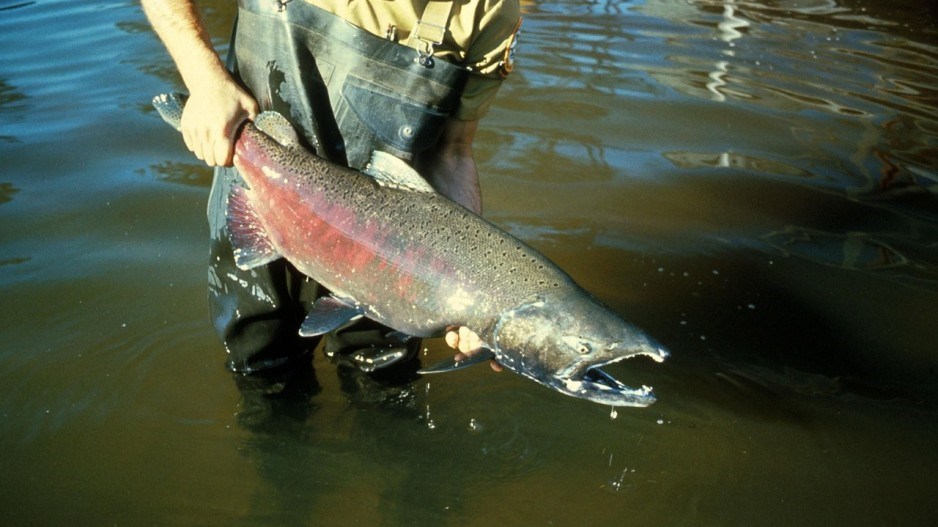Optimism is growing for a bountiful recreational fishing season this summer, following recently released data for chinook in 2023.
Chinook salmon are the largest of the five species of salmon in B.C. and favoured by sport fisherman because of their size. They are also favoured by Southern Resident Killer Whales (SRKW), and both chinook and the SRKW have been decline for about a decade.
But B.C. chinook staged a major comeback in 2023, with 627,000 returns to the Thompson-Shuswap system, according to the Sport Fishing Institute (SFI), which cited recently published data from Fisheries and Oceans Canada.
Average returns over the last decade have been a fraction of that – 75,000 to 100,000 fish per year, the SFI said.
“After several cycles of below average returns, some key stocks have rebounded leading to an abundance of chinook in B.C. south coast waters that has not been seen in decades, or maybe ever,” the SFI says in a press release.
The returns for what is referred to as the Fall 4.1 chinook stock have been strong for other B.C. river systems, as well, the SFI notes.
“The Harrison River stock, closely monitored to provide a proxy for all the other rivers that make up the larger Fall 4.1 stock group, returned at 150,000, over double the science-based escapement goal,” the SFI states.
“Cowichan chinook, another carefully monitored indicator stock, is estimated at 21,000 and has been well over its science-based escapement goal of 6,500 for over seven years now. Enhanced chinook returns to Barkley Sound are estimated at 200,000, and all West and East Coast Vancouver Island enhanced runs returns are at high levels of abundance in 2023.
“These are undeniable positive numbers,” SFI executive director Owen Bird said.
The SFI notes that the abundance is skewed more to chinook that spend more time in the ocean. So-called “ocean” chinook spend only a few months in freshwater before moving to tidal waters, whereas “stream” chinook will spend a year or two in rivers before moving to the ocean. It’s the ocean chinook that returned last year in such great abundance.
Since chinook are the main diet for SRKW, DFO began implementing stricter conservation measures, area closures and retention limits for chinook in 2018, in an attempt to address falling SRKW numbers.
While some of the conservation measures and restrictions may have contributed to last year’s rebound, Bird said favourable ocean conditions are probably the main reason why last year’s chinook numbers were so good.
“Ocean conditions seem to have been favourable for these stocks of chinook,” Bird said.
Whether DFO might this year loosen some of the restrictions it has placed for chinook this year, as a result of last year's returns, remains to be seen.
“The argument will be that one year does not a recovery make,” Bird said.


